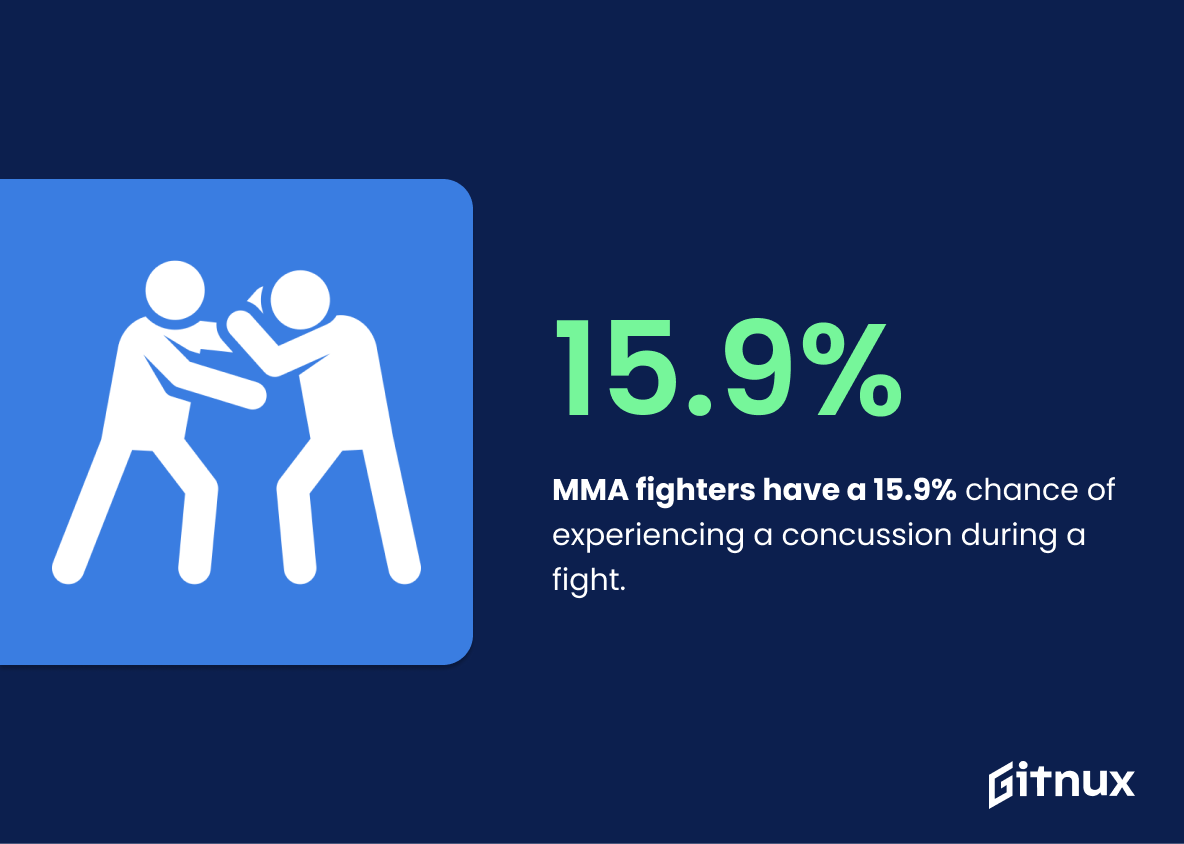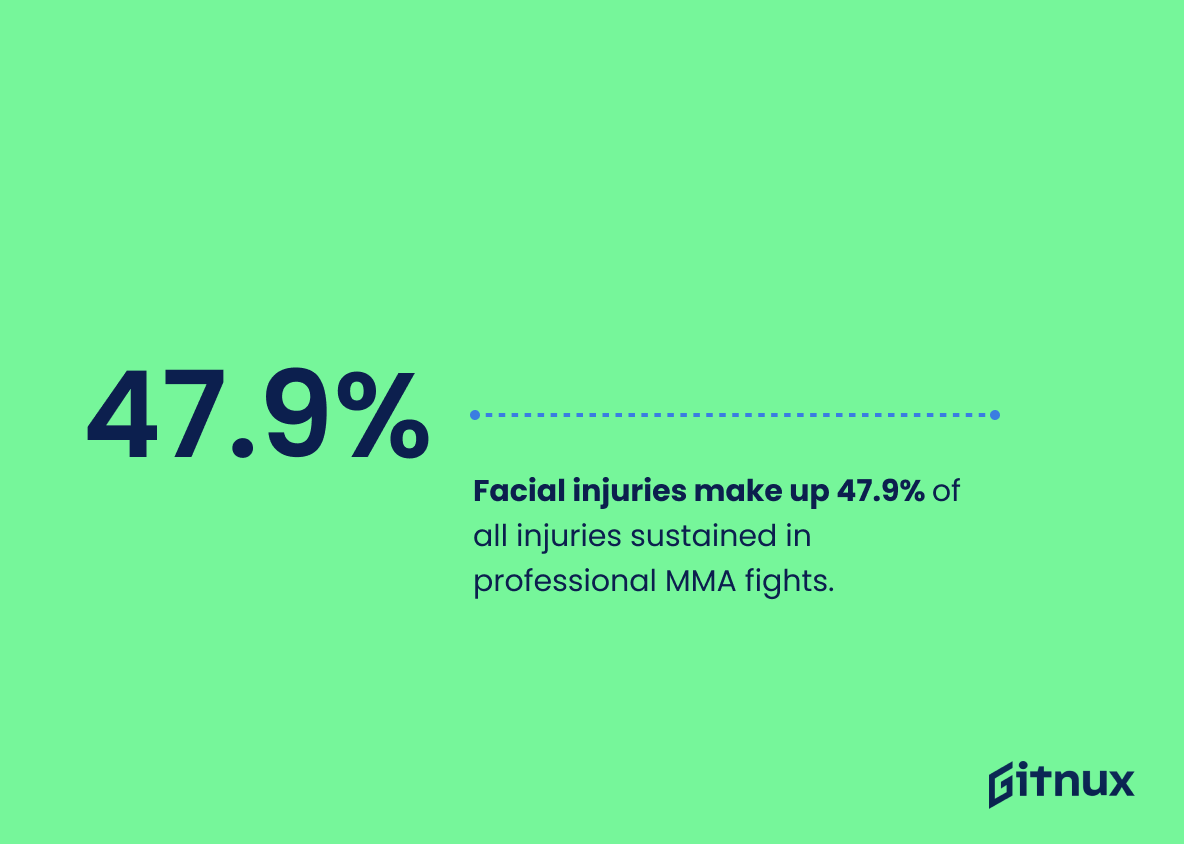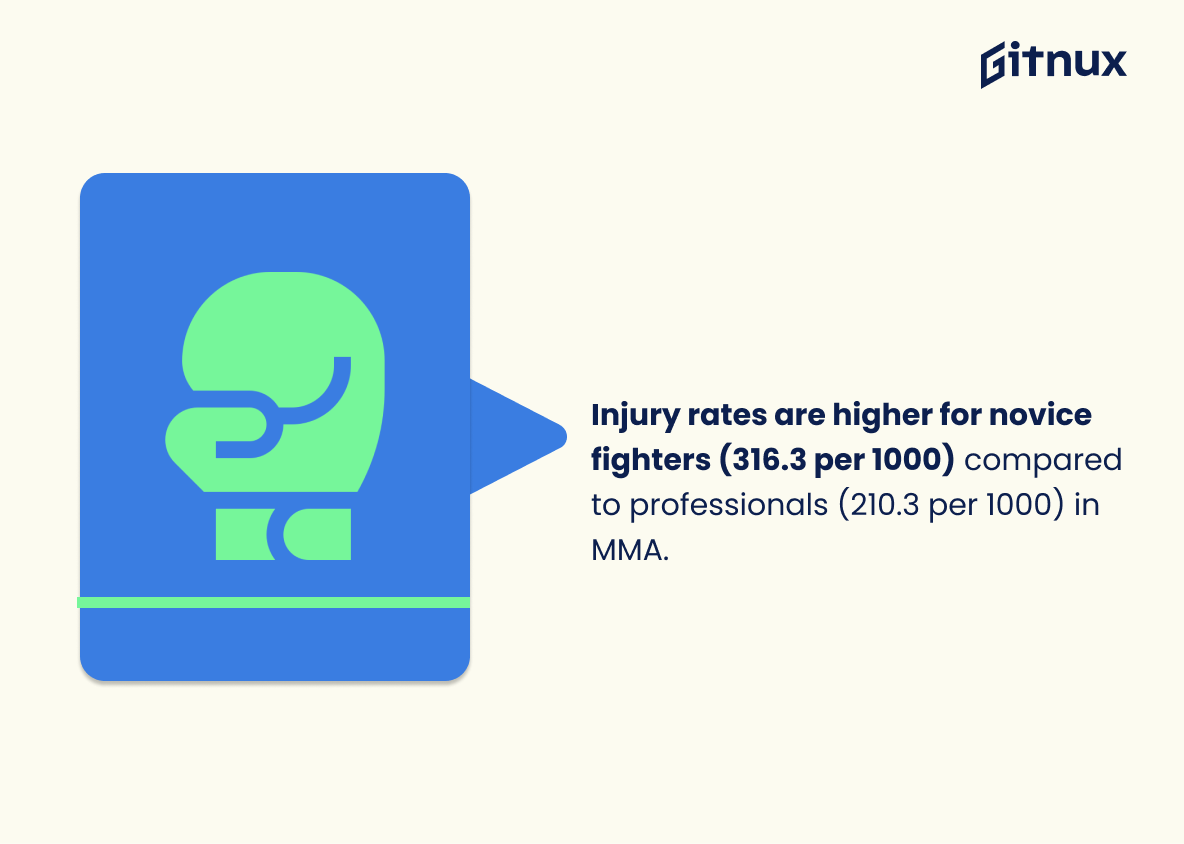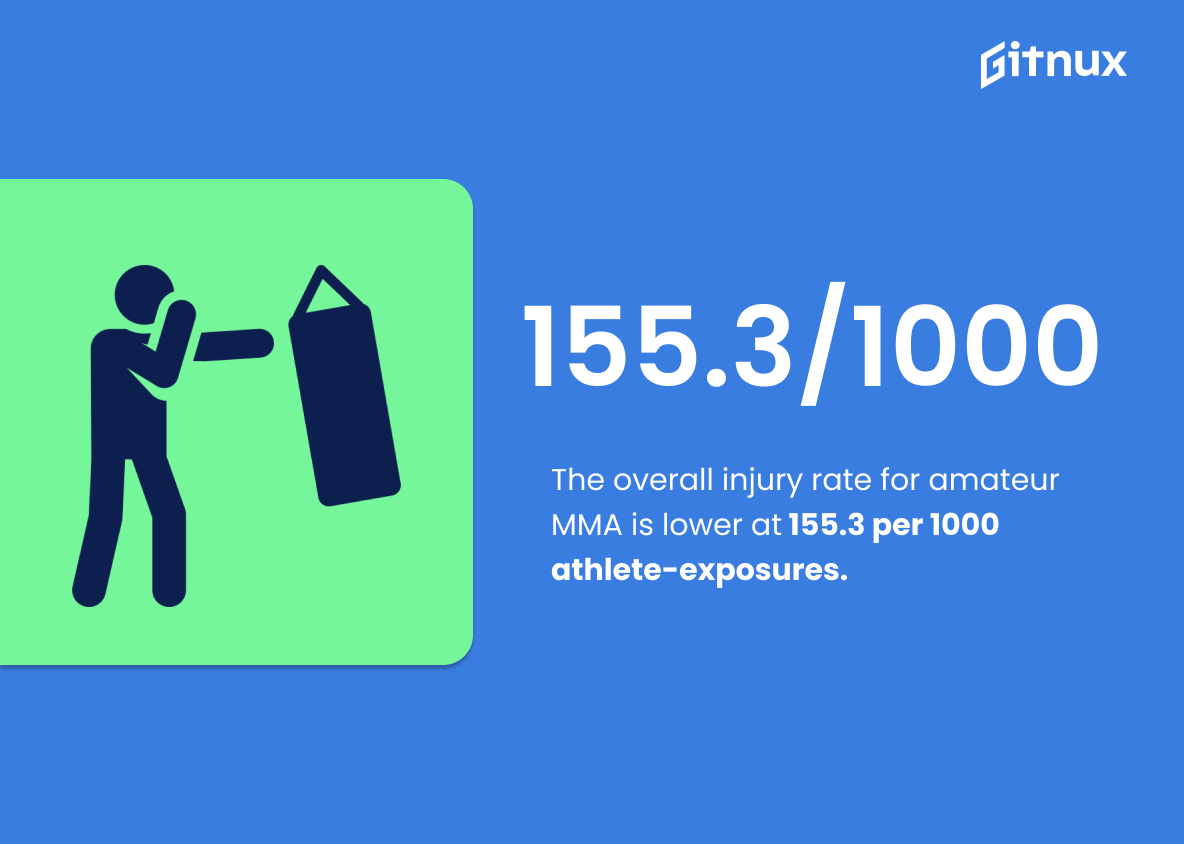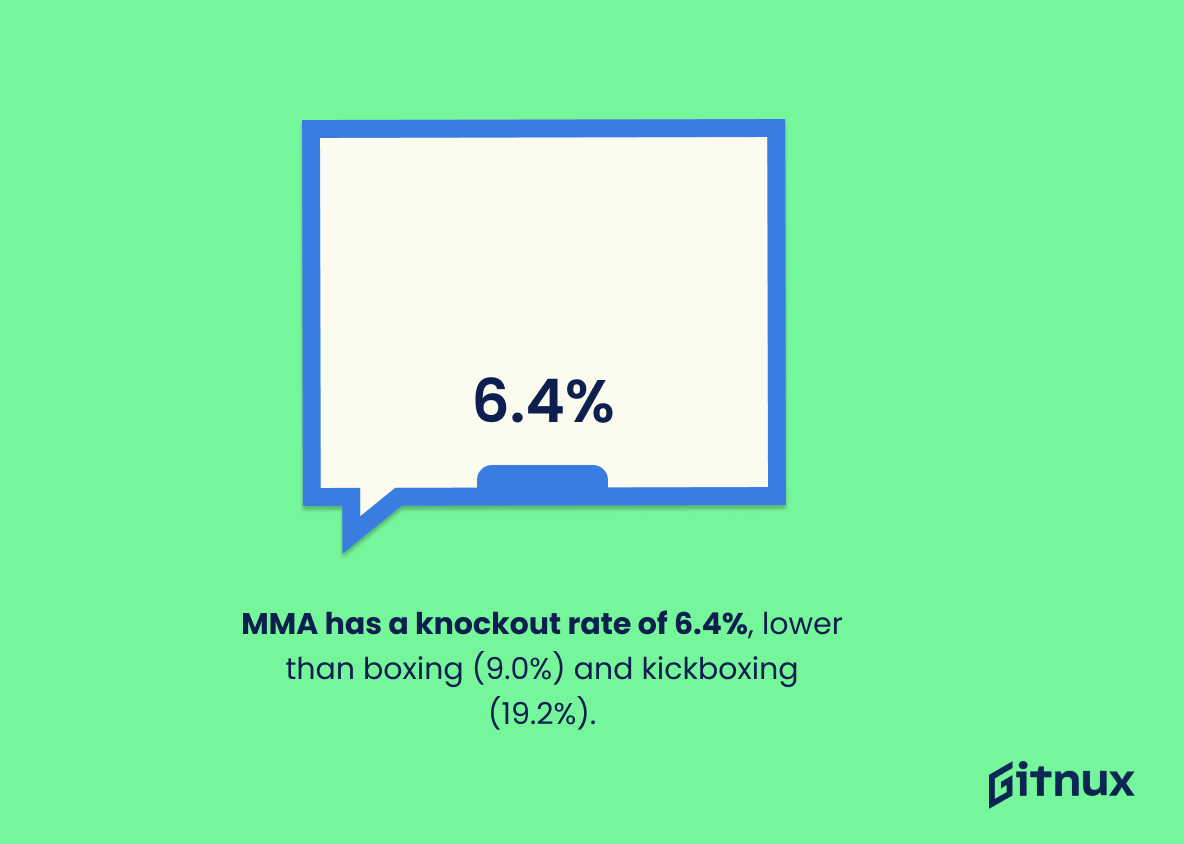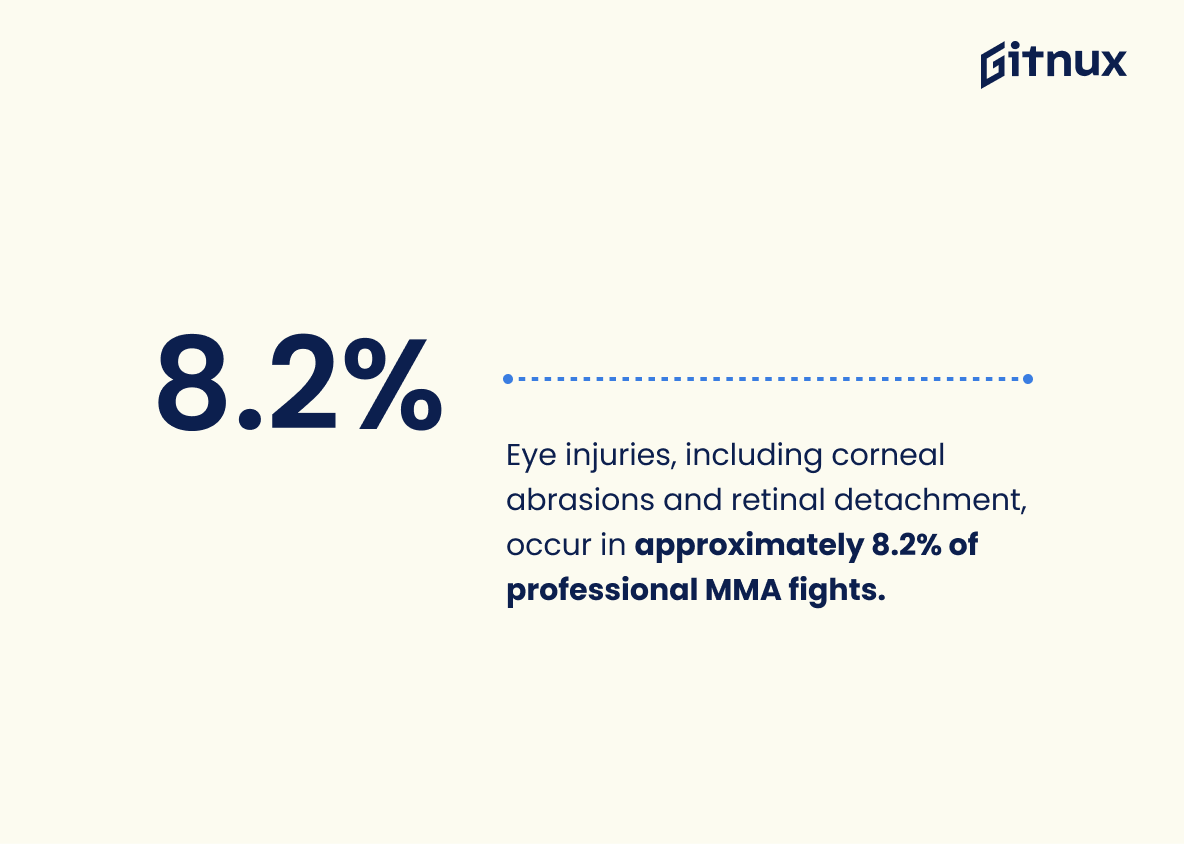Mixed Martial Arts (MMA) is a full-contact combat sport that has grown in popularity over the past few decades. As with any contact sport, there are risks of injury associated with MMA. In this blog post, we will explore some statistics related to injuries sustained by MMA fighters and discuss how these numbers compare to other sports such as football or hockey.
We’ll look at where most injuries occur, what types of injuries are common among fighters, and which factors increase the risk for injury during an MMA fight. Finally, we’ll examine data on career-ending head trauma and neurological damage caused by repeated blows to the head in order to gain insight into long-term health effects from participating in this high intensity activity.
MMA Injuries Statistics Overview
MMA fighters have a 15.9% chance of experiencing a concussion during a fight.
This statistic is a stark reminder of the potential risks associated with MMA fighting. It highlights the importance of safety precautions and protective gear for fighters, as well as the need for medical professionals to be on hand during fights to ensure that any potential concussions are identified and treated quickly.
The risk of injury in MMA is highest during competition, with a 5.6 times higher injury rate compared to training.
This statistic is a stark reminder of the dangers of MMA competition, highlighting the fact that the risk of injury is significantly higher when competing than when training. It serves as a warning to those considering taking part in MMA, and emphasizes the importance of taking the necessary precautions to ensure safety.
Facial injuries make up 47.9% of all injuries sustained in professional MMA fights.
This statistic is a stark reminder of the physical toll that professional MMA fighters endure. It highlights the fact that, despite the various techniques and strategies employed in the sport, the face is still the most vulnerable part of the body and is often the target of the most serious injuries. This statistic serves as a reminder of the importance of proper protective gear and training for MMA fighters, as well as the need for medical personnel to be on hand to provide immediate care in the event of an injury.
Injury rates are higher for novice fighters (316.3 per 1000) compared to professionals (210.3 per 1000) in MMA.
This statistic is a stark reminder of the dangers of MMA for those who are new to the sport. It highlights the importance of proper training and safety protocols for those just starting out, as the risk of injury is significantly higher for novice fighters. This statistic is a crucial piece of information for anyone considering taking up MMA, as it serves as a warning of the potential risks involved.
The average MMA career length is 12 years, with more than half of career-ending injuries caused by fractures and dislocations.
This statistic is a powerful reminder of the physical toll that MMA can take on an athlete’s body. It highlights the fact that, despite the rigorous training and preparation that goes into the sport, injuries are still a common occurrence, with fractures and dislocations being the most common cause of career-ending injuries. This information is essential for any blog post about MMA injuries statistics, as it provides a clear indication of the risks associated with the sport.
The overall injury rate for amateur MMA is lower at 155.3 per 1000 athlete-exposures.
This statistic is a crucial indicator of the safety of amateur MMA, demonstrating that the risk of injury is relatively low. It is an important piece of information for anyone considering taking up the sport, as it shows that the risk of injury is manageable and that the sport can be enjoyed safely.
MMA has a knockout rate of 6.4% in professional fights, which is lower than the rates in boxing (9.0%) and kickboxing (19.2%).
This statistic is important in the context of MMA injuries statistics because it demonstrates that MMA is a relatively safer combat sport than boxing and kickboxing. With a lower knockout rate, MMA fighters are less likely to suffer from the serious injuries that can occur from a knockout. This statistic provides evidence that MMA is a safer sport than its counterparts, which is an important factor to consider when discussing MMA injuries.
Eye injuries, including corneal abrasions and retinal detachment, occur in approximately 8.2% of professional MMA fights.
This statistic is a powerful reminder of the potential risks associated with professional MMA fighting. It highlights the fact that even the most experienced fighters are not immune to the dangers of the sport, and that eye injuries can occur in a significant number of fights. This statistic is an important piece of information for anyone considering taking up MMA, as it serves as a reminder of the potential risks involved.
The overall injury prevalence for combat sports athletes, including MMA fighters, is reported to be 73.6%.
This statistic is a stark reminder of the risks associated with combat sports, such as MMA. It highlights the fact that injuries are a common occurrence in these sports, and that athletes should take the necessary precautions to protect themselves. It also serves as a warning to those considering taking up MMA, that they should be aware of the potential for injury and take the necessary steps to minimize the risk.
Orthopedic injuries account for 49.9% of all injuries in MMA.
This statistic is a powerful indicator of the prevalence of orthopedic injuries in MMA, highlighting the need for fighters to take extra precautions to protect their bodies. It also serves as a reminder of the importance of proper training and conditioning to reduce the risk of such injuries. Furthermore, it provides a valuable insight into the types of injuries that are most common in MMA, allowing fighters and coaches to better prepare for and prevent them.
Shoulder injuries make up 12% of all injuries in MMA.
This statistic is a telling indication of the prevalence of shoulder injuries in MMA, highlighting the need for fighters to take extra precautions to protect their shoulders during training and competition. It also serves as a reminder to coaches and trainers to ensure that their athletes are properly conditioned and equipped to reduce the risk of shoulder injuries. Furthermore, this statistic can be used to inform the development of new safety protocols and equipment to better protect fighters from shoulder injuries.
The prevalence of neurological injuries (concussions and subconcussive impacts) in MMA is reported to be 9.3%.
This statistic is a stark reminder of the potential risks associated with MMA. It highlights the fact that, despite the rigorous safety protocols in place, there is still a significant chance of sustaining a neurological injury during a match. This statistic serves as a warning to those considering taking up MMA, and a reminder to those already involved to take extra precautions to protect themselves.
Conclusion
MMA has been found to have an injury rate of 228.7 per 1000 athlete-exposures, making it safer than sports like football or hockey. The majority of MMA injuries are located in the head (66.8%) and consist primarily of lacerations and contusions, with 59% of fighters experiencing an injury during each professional fight. Lacerations (36.7%), fractures (25%), and contusions (20%) were identified as the most common types of injury in MMA fights, while 15.9% chance exists for a fighter to experience a concussion during a bout on average; male fighters had higher rates at 281 compared to female athletes’ 133 per 1000 exposures respectively.
Injury rates were also seen to be highest during competition rather than training sessions – 5 times more likely – with facial injuries accounting for 47%. Novice fighters experienced 316 out every 1 000 exposures whereas professionals only 210; amateur levels saw 155 out every 1 000 exposures instead . Knockout rates stood lower at 6%, eye injuries 8%, orthopedic 49%, knee 40% shoulder 12%; risk increased by 18 % when bouts lasted longer , whilst neurological issues occurred 9%. Finally career ending head trauma was reported as being higher in MMA events at 1 point 9 percent versus 0 point five percent in professional football games.. All these statistics show that although there is some risk involved with participating in Mixed Martial Arts competitions, overall it is still considered one of the safest contact sports available today due its low rate relative other popular activities such as American Football or Hockey.
References
0. – https://www.bjsm.bmj.com
1. – https://www.tandfonline.com
2. – https://www.health.harvard.edu
3. – https://www.pubmed.ncbi.nlm.nih.gov
4. – https://www.link.springer.com
5. – https://www.jovs.amegroups.com
6. – https://www.ncbi.nlm.nih.gov
